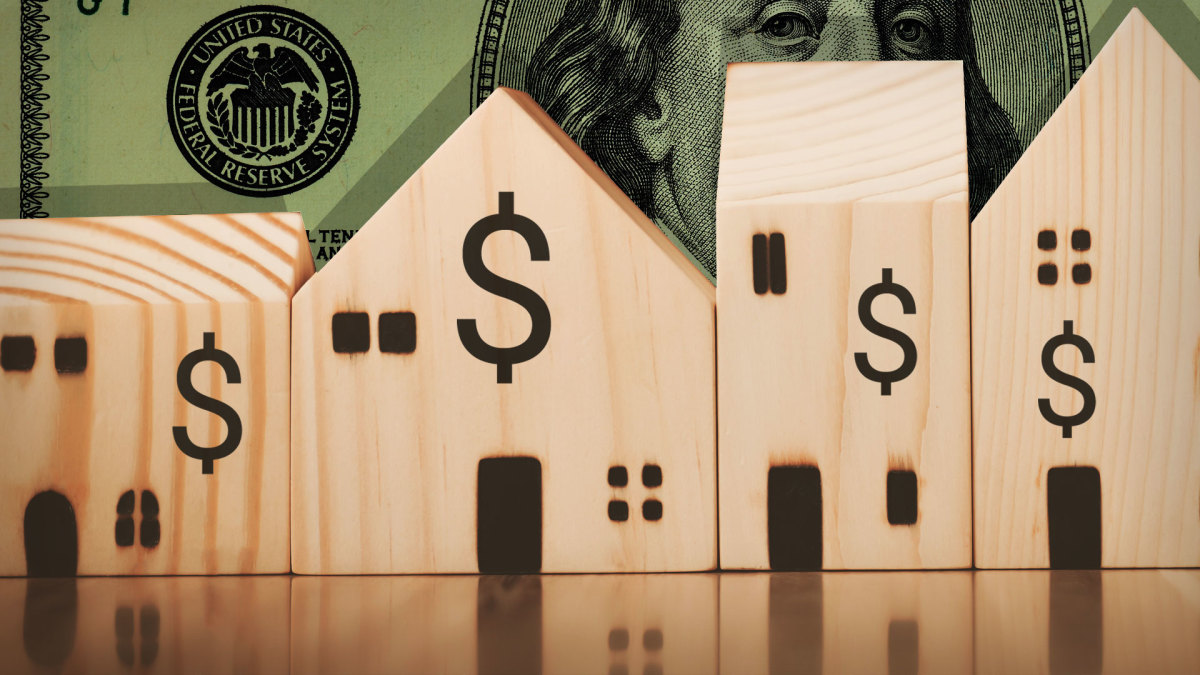
If you are deciding if to buy a home or sell one, what the Federal Reserve does with interest rates this week and in the coming months will definitely affect you.
The central bank will cut its key interest rate, perhaps as early as July 31, but more likely in mid-September, and then several times over this year and early 2025.
The result will be lower mortgage rates.
Related: Buckle up: Markets face biggest week of summer
If you have been wanting to buy a home, you can start to think realistically about it.
Home buying is one of the most intimate of challenges:
- The buyer and seller have to make the deal each can afford.
- The sale's closing has a huge impact on the U.S. economy directly and indirectly.
That's because the transaction sets off a new round of spending as the new owners make a house or apartment their own. And the existing owner may have to do the same thing in a new residence.

Image source: Shutterstock/TheStreet
The great inflation fight
Home buying has been a struggle since the Federal Reserve raised rates 11 times between March 2022 and July 2023 to fight inflation and get it down to 2% a year. The Fed's campaign pushed its key federal funds rate to a range of 5.25% to 5.5% and pushed U.S. interest rates broadly higher.
By October 2023, the yield on the 10-year Treasury yield was reaching 5%. Stocks were tumbling with economic stress spreading.
The 10-year yield heavily influences mortgage rates. So, when the yield hit 5%, that meant the mortgage rate surged to about 8% for the first time since August 2000. More importantly, it was up from a low of 2.8% in the summer of 2021 before the Fed began raising rates.
At 2.8%, a $250,000 30-year mortgage would cost $1,027 per month in principal and interest (with taxes and insurance additional costs). By comparison, an 8% mortgage is plain expensive. Principal and interest on our mortgage: $1,840 a month, up nearly 80% from 2021.
So, as the Fed raised rates, many people passed on buying.
Home sales are still very sluggish
Lately, there has been some relief. The rate on a 30-year fixed-rate mortgage now ranges from 6.7% to 6.9%.
A $250,000 mortgage means a monthly payment of roughly $1,640 plus taxes and insurance. That works out to a savings of $200 a month, $2,400 a year,
However, the lower rates have done little to solve three problems:
- The rate is not yet low enough to entice more buyers into the market.
- Home prices are still ridiculously high in many big metro markets such as New York or San Francisco.
- The supply of housing nationally, partly because of high rates and regulatory hurdles, hasn't kept pace with demand.
Sales of existing homes in June — which account for about 90% of the U.S. market — ran at an annual rate of 3.89 million units, according to the National Association of Realtors. That was down 5.4% from a year earlier and part of what's become a long-term trend. Since 2020, existing home sales are down more than 40%.
More on rates and the economy
- Fed meeting will light the path to lower rates
- Is there a housing bubble on the horizon?
- With Fed set to cut rates, this money move may pay off
But all the while, prices have gone up much faster than inflation data would suggest was sort of rational.
Meaning: Affluent buyers trying to avoid the COVID-19 pandemic or well-moneyed investors were able to cobble together deals more easily than first-time buyers or lower-income buyers.
Real estate brokers now believe the activity broadly will pick up if — and when — mortgage rates fall under 6%. That's a level not seen since August 2022, as the Fed was busy attacking inflation.
So what the Fed does matters — whether a rate cut comes this week, September, or even December.
Momentum is growing for lower rates
The good news, in fact, is that the Fed's campaign finally seems to be working.
The bond market has been slowly pushing the 10-year yield lower since the yield peaked at 5% in October 2023. A blip in April pushed the yield to 4.7%, but the trend line of lower rates wasn't broken.
For the last month or so, housing-related stocks have been rising as tech stocks have stalled or fallen.
Among the top 25 S&P stocks this month are flooring manufacturer Mohawk Industries (MHK) , home builders D.R. Horton (DHI) , Lennar (LEN) and PulteGroup (PHM) , and forest products giant Weyerhaeuser (WY) . Nvidia (NVDA) is down more than 10%.
That is important. It means bond and stock investors now sense that lower rates will increase interest in home buying.
That brings us to this:
If you're a buyer . . .
- If you haven't talked to a lender and a financial advisor about what it will take to swing a deal, do so.
- Work through all the payment scenarios. Knowing the numbers is critical.
- Be patient unless you have children who need to know where they're headed to school. (Kids don't like shocks.)
If you're a seller . . .
- Start getting your house ready to sell.
- Line up movers you can trust.
- Scout out new appliances if you think your current house will need them.
- Update or write your will and financial plan.
Related: Veteran fund manager sees world of pain coming for stocks







